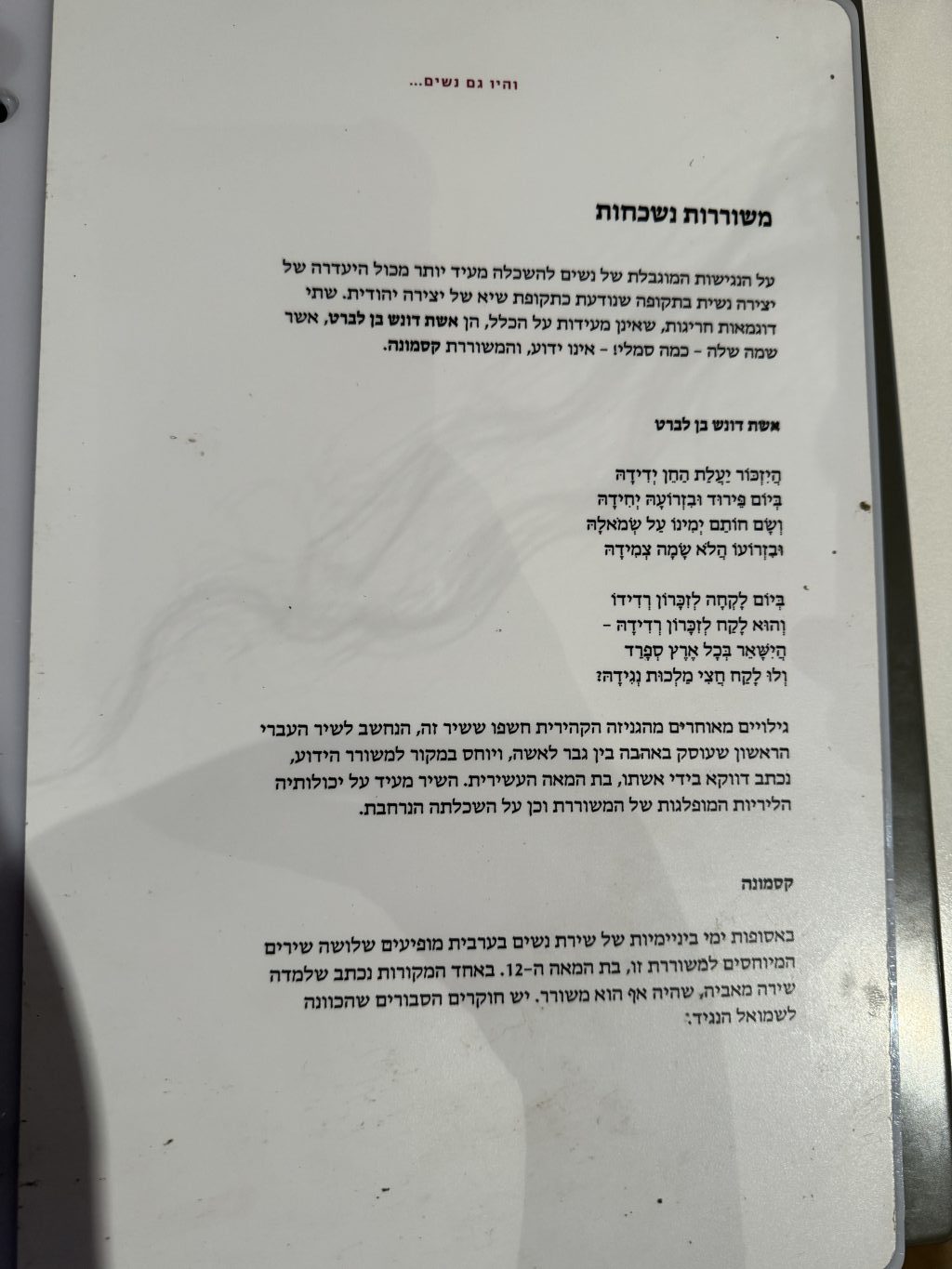Text Panel
Proof of the limited access women had to education is most visible in the absence of literary works written by them in this period, which was considered a pinnacle of Jewish creativity. Two examples that are exceptions to the rule are The Wife of Dunash ben Labrat, whose own name – how very symbolic! -, no one even knows, and the poetess Kasmuna.
The Wife of Dunash ben Labrat
And will her love recall his graceful doe
Cradling her son and left alone?
Who set his right hand’s seal on her left
Is not his arm wrapped with her precious stones?
That day she made a keepsake of his cloak
And he made hers a keepsake of his own –
Would he remain in all the land of Spain
If he had been given half her prince’s throne?
Discoveries from the Cairo Genizah revealed that the first hebrew poem dealing with love between a man and a woman, initially attributed to the famous 10th century poet, Dunash ben Labrat, was actually written by his wife. The poem testifies to the poetess’s extraordinary lyrical abilities and her broad-based education.
Kasmuna. Anthologies of medieval poems written by women in Arabic contain three poems that are attributed to this 12th century poetess. One source claims that Kasmuna learned poetry from her father, who was also a poet. Some researchers believe that he was Samuel Ha-Nagid.

